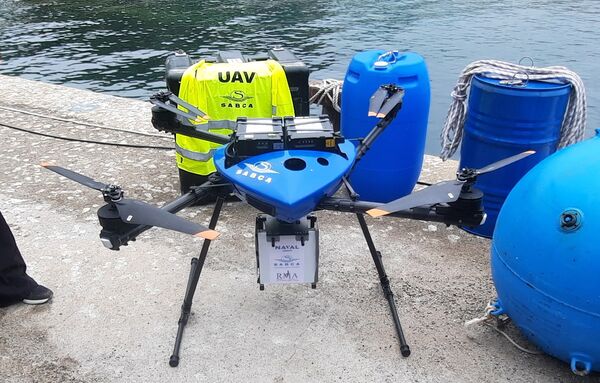
The Sabca unmanned aerial vehicle with drifting mine-detection payload, pictured at Sesimbra, Portugal, on 24 September 2024. (Janes/Neil Dee)
Naval Group Belgium, alongside Sabca, Ghent University, the Belgian Royal Military Academy (RMA), and the Belgian and Dutch navies, has tested a Sabca quadcopter unmanned aerial vehicle (UAV) with a payload to detect drifting mines at NATO's Exercise ‘REPMUS 24' (Robotic Experimentation with Maritime Unmanned Systems 2024) in Sesimbra, Portugal.
Speaking to media in Sesimbra, Aymeric Moullart de Torcy, business development senior manager for unmanned systems and cyber at Naval Group Belgium, said that the system is a proof of concept to detect floating mines. The system is experimental with the aim of finding the best way to detect drifting mines, he said.
Moullart de Torcy said that drifting mines are a problem as they are low in the water and can only be seen from above, as such the payload works by combining sensors to find the best wavelength of light to identify the mine. In practice, this means that the system can be used to identify birds and waves and detect drifting mines. Moullart de Torcy said that the proof of concept has had promising results, with future plans to include identification following detection, and to enable detection to be done to a full or greater extent automatically by the system, with a human operator only doing specific tasks.
Moullart de Torcy confirmed in response to a question from Janes
Looking to read the full article?
Gain unlimited access to Janes news and more...







